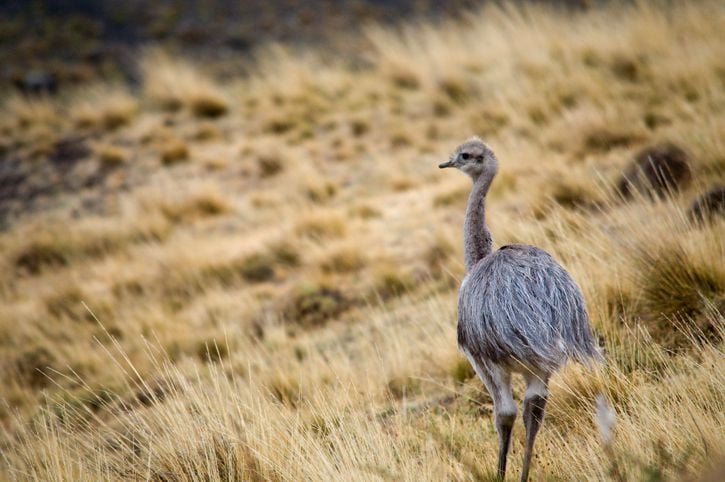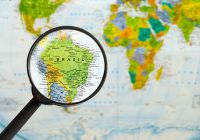An ecoregion found in the far south of South American, the Patagonian steppe is unique in terms of its flora and fauna. Learn about this vast semi-arid region with these eight facts.
It covers the vast proportion of Argentine Patagonia and parts of Chilean Patagonia
The Patagonian steppe covers 188,000-sq. miles (487,000 km²) of territory in Argentina and Chile. It is found along the eastern foothills of the Andes until the Atlantic coast, from Peninsula Valdes to Tierra del Fuego.
There are also sections of Patagonian steppe found near Punta Arenas in the southern part of Chilean Patagonia.
The Patagonian steppe has a uniquely dry and cold climate
The Patagonian steppe has a dry climate, with its flora predominantly characterized by]grasses and shrubby vegetation that can flourish in its rocky, sandy soil.
The average precipitation is only 200mm per year and the region is plagued by strong westerly winds. During winter, snow is common and the steppe is prone to frosts throughout the year, with temperatures reaching as low as 37.4 ˚F (-3˚C) in winter.
It has a varied topography
Although you might imagine the Patagonian steppe to be an area of monotonous, windswept grasslands, it actually comprises a range of plateaus, plains, hills and river valleys.
It was once home to the early inhabitants of Patagonia
Cave paintings, such as the Cave of Hands in the Santa Cruz Province of Argentina, give evidence of the indigenous peoples who once inhabited the Patagonian steppe and thrived despite its harsh climate.
More than 100 birds inhabit the Patagonian steppe
Expect a range of bird species if you visit the Patagonian steppe. Look out for groups of lesser rheas (Rhea pennata), a flightless bird that inhabits grasslands across Argentina, Chile, Bolivia and Peru.
 Other species include the peregrine falcon (Falco peregrinus) and the burrowing owl (Athene cunicularia).
Other species include the peregrine falcon (Falco peregrinus) and the burrowing owl (Athene cunicularia).
Mammals here are mainly small species – although there are some exceptions
Red (Lycalopex culpaeus) and gray foxes (Lycalopex gymnocercus) roam the Patagonian steppe, along with other small mammals include the larger hairy armadillo (Chaetophractus villosus) and the pampas cat (Lynchailurus pajeros).
However, the species you are most likely to see in Patagonia is the guanaco (Lama guanicoe), a large member of the camelid family that is native to South America and that lives in large herds. If you’re lucky, you might also chance upon the biggest predator of the steppe, the puma (Puma concolor), which is most regularly sighted in the grasslands of Torres del Paine National Park.
It is home to many endangered species
A number of species that inhabit the Patagonian steppe are at risk of extinction, including the near-threatened mara (Dolichotis patagonum) and the endangered huemul or South Andean deer (the national animal of Chile) (Hippocamelus bisulcus), the latter of which has an estimated population size of only 1,500 animals.
But is also endangered itself
 Although it’s home to a variety of natural reserves and protected areas, including Parque Nacional Nahuel Huapi, Los Glaciares National Park and Perito Moreno National Park, the Patagonian steppe ecoregion is vulnerable because of the impact of intensive human activity.
Although it’s home to a variety of natural reserves and protected areas, including Parque Nacional Nahuel Huapi, Los Glaciares National Park and Perito Moreno National Park, the Patagonian steppe ecoregion is vulnerable because of the impact of intensive human activity.
Oil extraction and sheep grazing are the main economic activities found here and the latter is responsible for causing widespread desertification, which has seriously damaged the ecosystem.
Hunting of fauna, including baby guanaco for their skins and rhea featheres has also put the animals of the Patagonian steppe at risk and organizations in both Chile and Argentina are calling for more to be done to protect this unique ecoregion.
No comments yet
There are no comments on this post yet.






Leave a comment